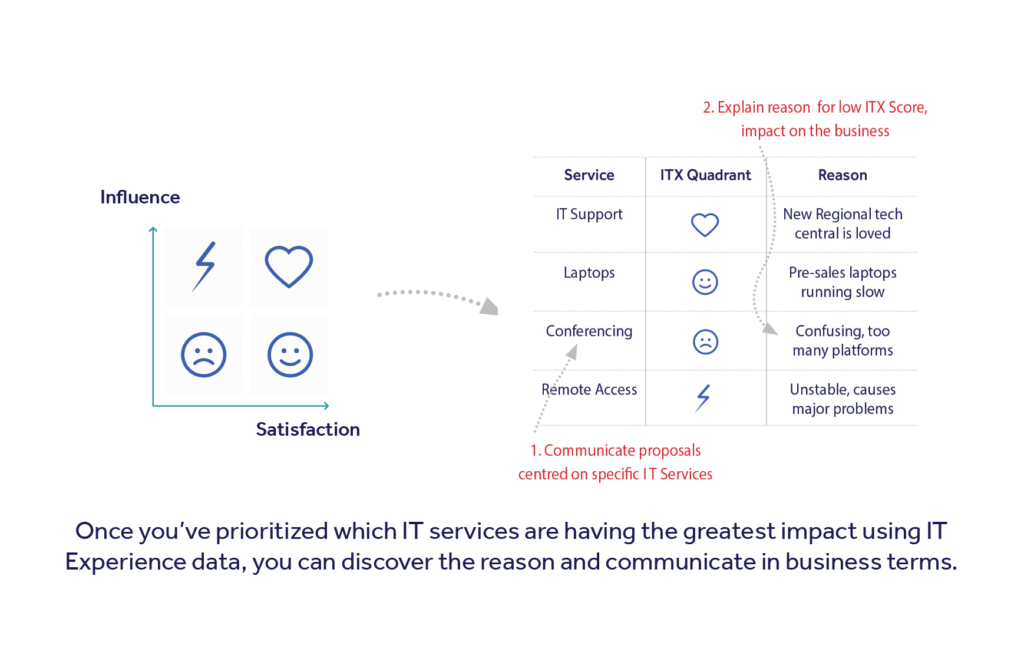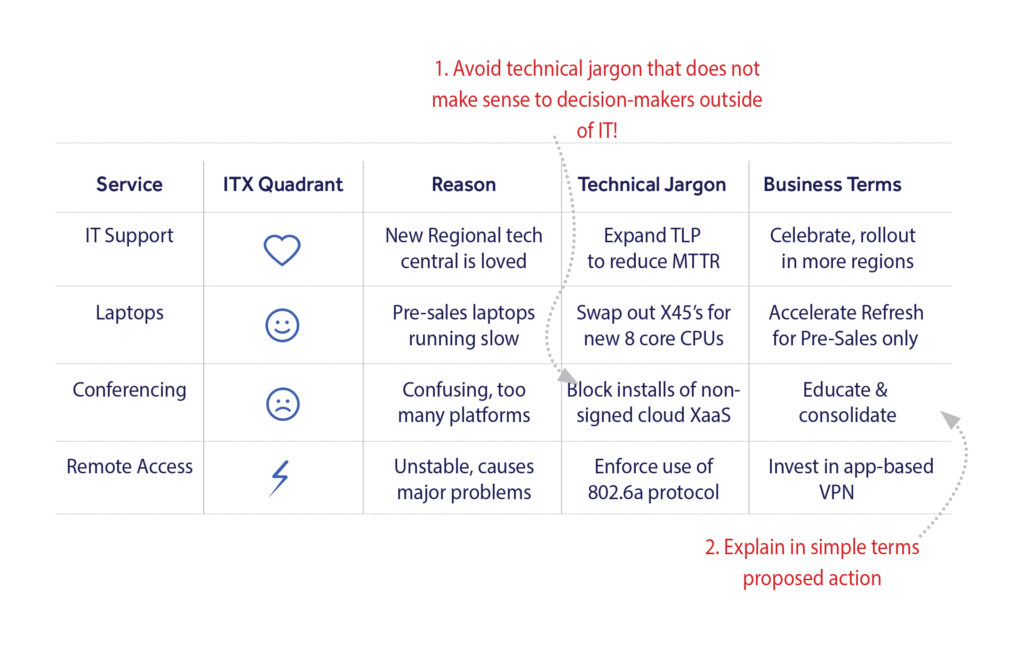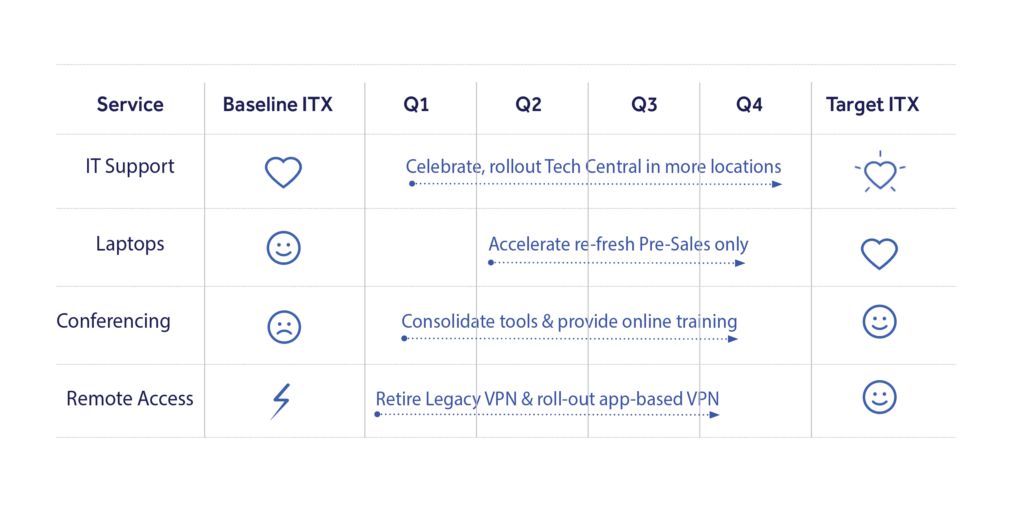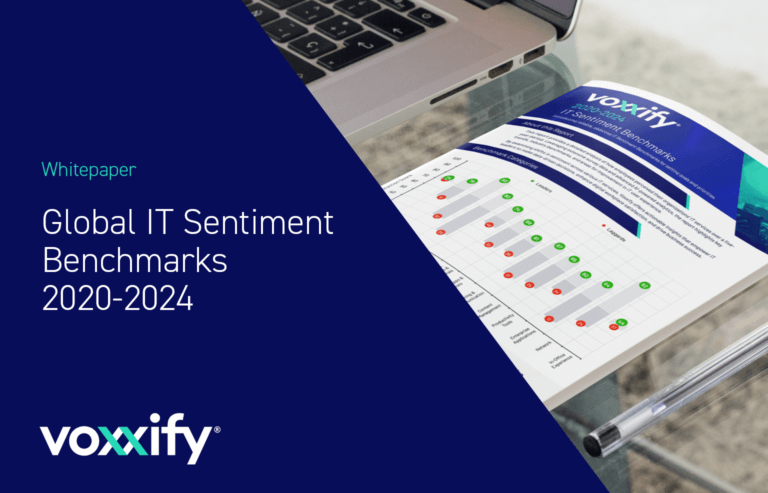IT Experience Whiteboard Video Series: Part Three
ITX #3: How to communicate your IT Strategy in business terms
Part Three of a Three-part blog series about planning with IT User Experience data: how to communicate your IT Roadmap in business terms and secure buy-in.
In Part 1 of this series, we explained why IT User Experience data is the “Missing Metric” and Part 2 outlined how you can use experience data to prioritize using the Influence Score.
Now we will share how to communicate your plan in a way that will secure buy-in from key stakeholders, and close the Continuous Improvement (CI) feedback loop with end-users. By communicating technology plans in terms of business impact, IT can move from its position in the business of “cost-centre” to “strategic enabler”.
When combined, these 3 steps deliver Continuous Improvement for IT that is closely aligned with the changing needs of the business.
Step One: Clarify the reasons behind your ITX Scores
Once you’ve identified both Satisfaction Score and Influence Score for each IT Service (see “ITX: How to Prioritize”), the next step is to clarify the reason for these scores so you can identify the most appropriate actions to improve them.
Strategies that our clients have employed for this discovery process include:
- Analysis of key trends in Satisfaction & Influence Scores (aka Experience Vectors)
- Deep dives into verbatim comments to enrich (or add colour to) raw data
- Readouts & workshops with IT leaders to draw up action plans
- Reaching out to individual end-users to validate results for particular services
This process helps validate any initial learning from the data, explaining the reasons behind why IT services are viewed positively or negatively and providing a solid foundation for a business-focused IT roadmap.

Step Two: Draw up a business-friendly IT roadmap
With reliable data, prioritized appropriately, you’re ready to go to the C-Suite with reliable evidence for proposed changes to technology, but communicated in business-friendly language instead of technical jargon.
By framing proposed actions in terms of how they will impact actual outcomes for employees, and thus the business overall (not just more narrowly defined outputs) you can provide valuable business context for your strategy.
For example, the conversation with your executive stakeholders could go something like this:
“This is what’s happening day-to-day for end users in these locations:
- IT Support is scoring well, and it’s clear the new regional Tech Lounge is delivering a lot of value. We can roll this out in more regions and reduce reliance on our outsourced help-desk provider.
- Laptops are scoring well across the board, but they are running particularly slow for Pre-Sales. We’re accelerating refresh for this user group only in the next quarter to address this issue.
- Conferencing is proving a huge issue for multiple user groups. The reason is there are too many platforms, and users are confused on which to use in different situations. We’re planning to consolidate onto two tools, and educate all users on which tools to use and when.
- Remote Access is a burning platform issue. It’s scoring poorly for both Satisfaction and Influence, meaning it’s having significant impact on the business. This is particularly acute because of COVID and hybrid workstyles, so we’re planning to invest in app-based “seamless” VPN. This will take 3 quarters to roll out securely, so we’ll complement this with clear messaging on the plan.

This means you’re going to stakeholders with strong evidence, proposing solutions in business-friendly terms, and painting a picture of how IT will be bringing value to the business in a way that you can measure.

When you take this approach, the response usually becomes enthusiastic.
“Finally, you get it, you understand us! You’ve got good data, it’s reliable, we understand it, we know your process. This is the way we’re going to measure it, we can help keep it on track.”
This helps you build trust and partnership with other parts of the business.
Step Three: Communicate and close the feedback loop with end users
A critical step is to go back to the employees to update them on what you’ve learned from their feedback, and what you plan to do with this knowledge to improve IT for them.
A simple email highlighting the top 3-5 takeaways, sent within 6 weeks of the feedback can have outsized returns in terms of employee and end user engagement.
In many cases, simply acknowledging issues and communicating a clear action plan to address them will help improve satisfaction & trust, and will take some of the pressure off timelines.
—-
If you haven’t gathered comprehensive IT Experience metrics before, you can get started by downloading our IT Budget Planning Toolkit. It provides practical frameworks and a simple IT Experience Calculator you can use to ground your IT action plan in business terms, focused on the needs of end-users across your organization.


